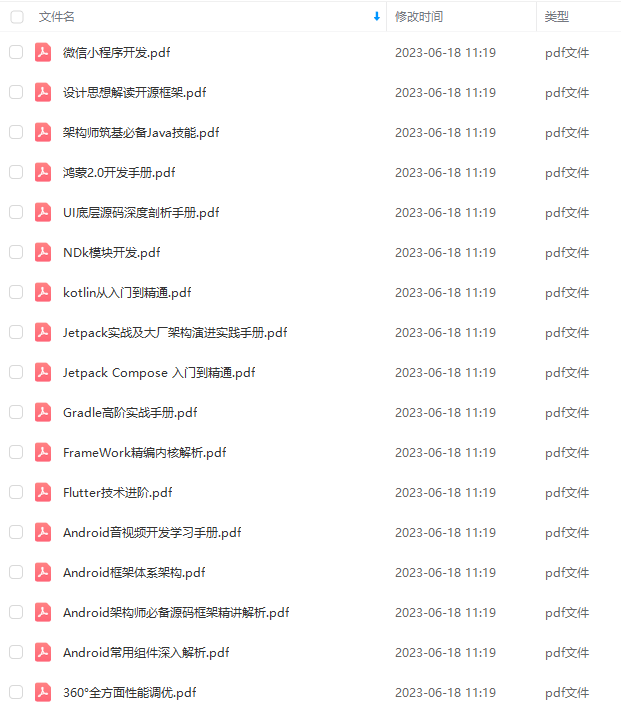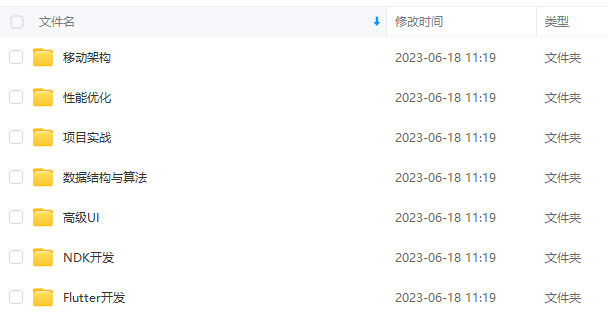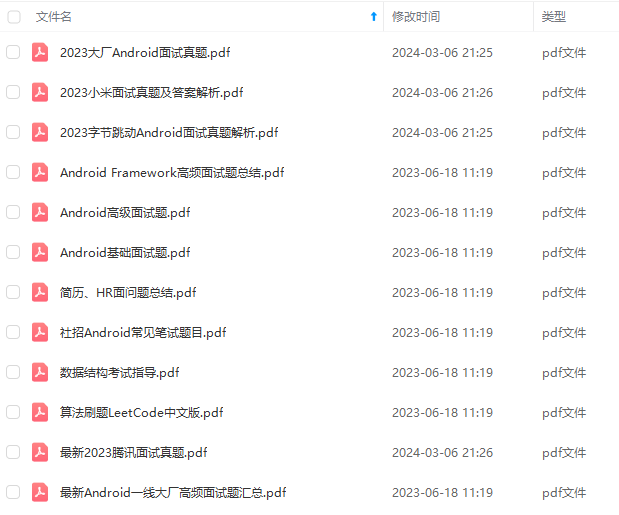我们都知道Handler的功能非常丰富,拥有立刻执行post()、延迟执行postDelayed()、定时执行postAtTime()等执行方式。下面就从源码分析是如何实现的。
public final class MessageQueue {
Message next() {
// Return here if the message loop has already quit and been disposed.
// This can happen if the application tries to restart a looper after quit
// which is not supported.
final long ptr = mPtr;
if (ptr == 0) {
return null;
}
int pendingIdleHandlerCount = -1; // -1 only during first iteration
int nextPollTimeoutMillis = 0;
for (;😉 {
if (nextPollTimeoutMillis != 0) {
Binder.flushPendingCommands();
}
nativePollOnce(ptr, nextPollTimeoutMillis);
synchronized (this) {
// Try to retrieve the next message. Return if found.
final long now = SystemClock.uptimeMillis();
Message prevMsg = null;
Message msg = mMessages;
if (msg != null && msg.target == null) {
// Stalled by a barrier. Find the next asynchronous message in the queue.
do {
prevMsg = msg;
msg = msg.next;
} while (msg != null && !msg.isAsynchronous());
}
if (msg != null) {
if (now < msg.when) {
// Next message is not ready. Set a timeout to wake up when it is ready.
nextPollTimeoutMillis = (int) Math.min(msg.when - now, Integer.MAX_VALUE);
} else {
// Got a message.
mBlocked = false;
if (prevMsg != null) {
prevMsg.next = msg.next;
} else {
mMessages = msg.next;
}
msg.next = null;
if (DEBUG) Log.v(TAG, "Returning message: " + msg);
msg.markInUse();
return msg;
}
} else {
// No more messages.
nextPollTimeoutMillis = -1;
}
// Process the quit message now that all pending messages have been handled.
if (mQuitting) {
dispose();
return null;
}
// If first time idle, then get the number of idlers to run.
// Idle handles only run if the queue is empty or if the first message
// in the queue (possibly a barrier) is due to be handled in the future.
if (pendingIdleHandlerCount < 0
&& (mMessages == null || now < mMessages.when)) {
pendingIdleHandlerCount = mIdleHandlers.size();
}
if (pendingIdleHandlerCount <= 0) {
// No idle handlers to run. Loop and wait some more.
mBlocked = true;
continue;
}
if (mPendingIdleHandlers == null) {
mPendingIdleHandlers = new IdleHandler[Math.max(pendingIdleHandlerCount, 4)];
}
mPendingIdleHandlers = mIdleHandlers.toArray(mPendingIdleHandlers);
}
// Run the idle handlers.
// We only ever reach this code block during the first iteration.
for (int i = 0; i < pendingIdleHandlerCount; i++) {
final IdleHandler idler = mPendingIdleHandlers[i];
mPendingIdleHandlers[i] = null; // release the reference to the handler
boolean keep = false;
try {
keep = idler.queueIdle();
} catch (Throwable t) {
Log.wtf(TAG, “IdleHandler threw exception”, t);
}
if (!keep) {
synchronized (this) {
mIdleHandlers.remove(idler);
}
}
}
// Reset the idle handler count to 0 so we do not run them again.
pendingIdleHandlerCount = 0;
// While calling an idle handler, a new message could have been delivered
// so go back and look again for a pending message without waiting.
nextPollTimeoutMillis = 0;
}
}
}
MessageQueue.next() 是一个带有阻塞的方法,只有退出或者有任务才会return,起阻塞的实现是使用Native层的 nativePollOnce() 函数,如果消息队列中没有消息存在nativePollOnce就不会返回,一直处于Native层等待状态。直到调用 quit() 退出或者调用 enqueueMessage(Message msg, long when) 有新的任务进来调用了Native层的nativeWake()函数,才会重新唤醒。 android_os_MessageQueue.cpp
nativePollOnce(long ptr, int timeoutMillis)
nativePollOnce 是一个带有两个参数的Native函数,第一个参数是作为当前任务队列ID;第二个参数是等待时长,如果是-1,就代表无消息,会进入等待状态,如果是 0,再次查找未等待的消息。如果大于0,就等到指定时长然后返回。
nextPollTimeoutMillis = (int) Math.min(msg.when - now, Integer.MAX_VALUE);
在这行代码进行延时的赋值,从而实现postDelayed、postAtTime的功能
enqueueMessage()
看到这里我们可能会有一个疑问,既然是队列,先进先出的原则,那么以下代码输出的结果是如何?
handler?.postDelayed({ println(“任务1”) },5000)
handler?.post { println(“任务2”) }
handler?.postDelayed({ println(“任务3”) },3000)
// 输出结果
任务2
任务3
任务1
之所以是如此,是因为在 enqueueMessage(Message msg, long when) 添加任务的时候已经就已经按照执行的时间要求做好了排序。
boolean enqueueMessage(Message msg, long when) {
if (msg.target == null) {
throw new IllegalArgumentException(“Message must have a target.”);
}
if (msg.isInUse()) {
throw new IllegalStateException(msg + " This message is already in use.");
}
synchronized (this) {
if (mQuitting) {
IllegalStateException e = new IllegalStateException(
msg.target + " sending message to a Handler on a dead thread");
Log.w(TAG, e.getMessage(), e);
msg.recycle();
return false;
}
msg.markInUse();
msg.when = when;
Message p = mMessages;
boolean needWake;
if (p == null || when == 0 || when < p.when) {
// New head, wake up the event queue if blocked.
msg.next = p;
mMessages = msg;
needWake = mBlocked;
} else {
// Inserted within the middle of the queue. Usually we don’t have to wake
// up the event queue unless there is a barrier at the head of the queue
// and the message is the earliest asynchronous message in the queue.
needWake = mBlocked && p.target == null && msg.isAsynchronous();
Message prev;
for (;😉 {
prev = p;
p = p.next;
if (p == null || when < p.when) {
break;
}
if (needWake && p.isAsynchronous()) {
needWake = false;
}
}
msg.next = p; // invariant: p == prev.next
prev.next = msg;
}
// We can assume mPtr != 0 because mQuitting is false.
if (needWake) {
nativeWake(mPtr);
}
}
return true;
}
自我介绍一下,小编13年上海交大毕业,曾经在小公司待过,也去过华为、OPPO等大厂,18年进入阿里一直到现在。
深知大多数初中级安卓工程师,想要提升技能,往往是自己摸索成长,但自己不成体系的自学效果低效又漫长,而且极易碰到天花板技术停滞不前!
因此收集整理了一份《2024年最新Android移动开发全套学习资料》送给大家,初衷也很简单,就是希望能够帮助到想自学提升又不知道该从何学起的朋友,同时减轻大家的负担。




由于文件比较大,这里只是将部分目录截图出来,每个节点里面都包含大厂面经、学习笔记、源码讲义、实战项目、讲解视频
如果你觉得这些内容对你有帮助,可以添加下面V无偿领取!(备注Android)

文末
初级工程师拿到需求会直接开始做,然后做着做着发现有问题了,要么技术实现不了,要么逻辑有问题。
而高级工程师拿到需求会考虑很多,技术的可行性?对现有业务有没有帮助?对现有技术架构的影响?扩展性如何?等等…之后才会再进行设计编码阶段。
而现在随着跨平台开发,混合式开发,前端开发之类的热门,Android开发者需要学习和掌握的技术也在不断的增加。
通过和一些行业里的朋友交流讨论,以及参考现在大厂面试的要求。我们花了差不多一个月时间整理出了这份Android高级工程师需要掌握的所有知识体系。你可以看下掌握了多少。
混合式开发,微信小程序。都是得学会并且熟练的

这些是Android相关技术的内核,还有Java进阶

高级进阶必备的一些技术。像移动开发架构项目实战等

Android前沿技术;包括了组件化,热升级和热修复,以及各种架构跟框架的详细技术体系

以上即是我们整理的Android高级工程师需要掌握的技术体系了。可能很多朋友觉得很多技术自己都会了,只是一些新的技术不清楚而已。应该没什么太大的问题。
而这恰恰是问题所在!为什么别人高级工程师能年限突破30万,而你只有十几万呢?
就因为你只需补充你自己认为需要的,但并不知道企业需要的。这个就特别容易造成差距。因为你的技术体系并不系统,是零碎的,散乱的。那么你凭什么突破30万年薪呢?
我这些话比较直接,可能会戳到一些人的玻璃心,但是我知道肯定会对一些人起到点醒的效果的。而但凡只要有人因为我的这份高级系统大纲以及这些话找到了方向,并且付出行动去提升自我,为了成功变得更加努力。那么我做的这些就都有了意义。
喜欢的话请帮忙转发点赞一下能让更多有需要的人看到吧。谢谢!
以上系统大纲里包含的所有技术资料,我这里都有的。可以免费分享给有需要的朋友!
业需要的。这个就特别容易造成差距。因为你的技术体系并不系统,是零碎的,散乱的。那么你凭什么突破30万年薪呢?
我这些话比较直接,可能会戳到一些人的玻璃心,但是我知道肯定会对一些人起到点醒的效果的。而但凡只要有人因为我的这份高级系统大纲以及这些话找到了方向,并且付出行动去提升自我,为了成功变得更加努力。那么我做的这些就都有了意义。
喜欢的话请帮忙转发点赞一下能让更多有需要的人看到吧。谢谢!
以上系统大纲里包含的所有技术资料,我这里都有的。可以免费分享给有需要的朋友!






















 1595
1595











 被折叠的 条评论
为什么被折叠?
被折叠的 条评论
为什么被折叠?








